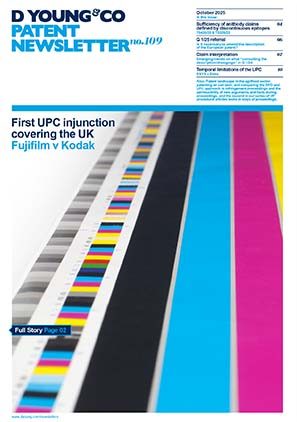Are room-temperature superconductors a reality at last?
Room-temperature superconductors, or more precisely room-temperature superconductors that operate at ambient pressure, have the potential to be one of the greatest inventions of all time. Superconductors are materials which have zero resistance when working within their operational parameters. Unfortunately, to date, we have only been able to make superconductors that operate at very low temperatures, typically less than -150 °C without the application of high pressure. The announcement, therefore, by a group from Seoul on 22 July 2023 of the invention of a room-temperature superconductor was met with great excitement. If their invention can be replicated it would revolutionise huge chunks of the economy, from greatly enhancing the efficiency of electric motors, generators and transformers, to allowing for practical intercontinental power grids and compact fusion reactors. Their invention does, however, raise several important IP issues.
Disclosure
Under patent law inventions need to be novel and inventive over all prior public disclosures. For most countries this includes the inventors’ own disclosures. As such it is essential to file a patent application before making any public disclosure and having robust disclosure procedures in place. This can be a particular issue in the highly competitive world of academia, where the pressure to publish is high and the availability of preprint repositories such as arXiv makes public disclosures just a click away. In the present case, it appears that the team got their application in early before uploading the paper, with their international patent application being filed back on 25 August 2022.
Inventorship
An applicant for a patent application must have the right to file a patent application from the inventor(s). Critically, patent law requires that the applicant has the right from all individuals that contributed sufficiently to the creation of the invention. Typically, this right is an implicit or explicit right derived from employment or other agreement, however, it can be good practice to ensure that all individuals sign an assignment covering the invention to the applicant. In the present case, it is notable that the Korean group published two papers on 22 July 2023 with overlapping, but different authors. This at least prima facie renders who should be listed as inventors on the patent application ambiguous.
Replicable technical effect
Teams around the world are racing to replicate the inventors’ findings. For a patent application to be granted it is necessary to show that the novel elements act to produce a replicable technical effect. For most patent applications outside of the pharmaceutical sphere patent examiners will usually give applicants the benefit of the doubt that their invention produces the technical effects listed in the application. However, even in cases where a patent examiner initially takes an applicant’s assertion of a technical effect on “faith”, the system allows for third parties to challenge the validity of the patent where it can be shown that the technical effect cannot be replicated. In this case, if third parties are unable to replicate the room-temperature superconductivity it would leave any patent open to challenge.
Conclusion
While it can be tempting for researchers to publish any exciting findings as soon as possible, there are also grave risks to potential future commercialisation if publication is not handled with care. We eagerly await confirmation whether any team can replicate the invention. If you have any questions your D Young & Co representative is always here to help.

